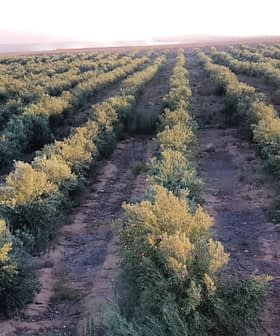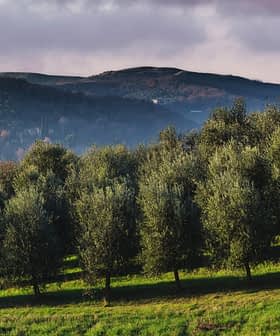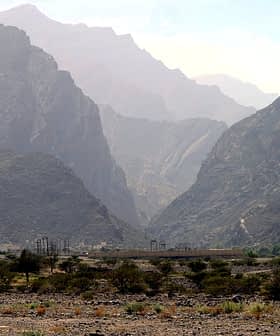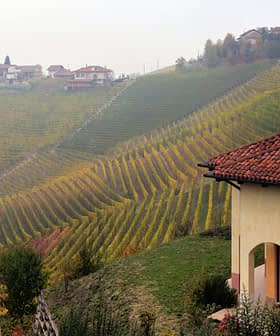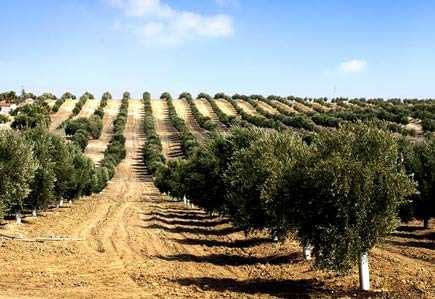
How are intensive olive groves different to the super-intensive?
Intensive and super-intensive olive groves are different to the so-called traditional plantations because of their high plantation density. In other words, they are distinguished by the high number of olive trees that coexist on the same hectare of soil, as well as the distribution of the trees, which are planted with just one foot in the soft soil and generally equipped with a watering system. Another difference is that, compared to the conventional crops, they offer the possibility of entirely mechanizing the harvest, thus making it possible to obtain higher production yields.
The intensive plantations are made up of isolated olive groves, with crowns that grow in the shape of a glass, and they have a plantation density of between 200 and 600 trees per hectare. The plantation frame is of at least 6 meters, and the estimated useful life of this crop type is of over 40 years.
For their part, the super-intensive olive groves — also known as the hedgerow olive grove system because of their characteristic linear distribution — are characterized by having a plantation density of between 1,000 and 2,000 trees per hectare, which are harvested with machines along narrow aisles of about 1.5 meters. In this case, the useful life of these plantations is positioned at between 12 and 14 years, on average.
This latter plantation type particularly adapts to those olive tree varietals that are less vigorous, meaning trees that enter into production earliest and with a lesser tendency to sprout side branches tend to be selected. Among these, the most used is the Arbequina, although others such as the Arbosana or Koroneiki are becoming ever more appreciated.
What are the minority components of olive oil?
Virgin olive oil, or in other words, the juice squeezed from the olive is a natural foodstuff made up of two clearly differentiated fractions. On the one hand, 98 percent of their composition corresponds to the liposoluble part, formed by various fatty acids among which oleic acid stands out for its elevated presence. On the other, the remaining 2 percent of the composition is represented by a hydrosoluble part which is, precisely, what houses the minority components.
To date, scientists have succeeded in pinpointing over 230 of these components. Many of them are of the phenolic type and are distinguished by their antioxidant properties, such as those proven to contain squalene, the simple phenols (hydrotoxitirosol and tyrosol), the secoiridoids (oleuropein), the lignans (acetoxy-pinoresinol and pinoresinol), the flavonoids, the pigments (chlorophylls and pheophytins), beta-carotene, alpha-tocopherol or the Vitamins A and E.
As research has progressed in this field, the synergy produced between the effects of the oleic acid and the aforementioned minority compounds has been seen to exert a protective and preventive effect against the development of certain tumours, such as breast or colon cancer. In the same way, its efficacy in reducing the risk of cardiovascular and various degenerative diseases has also been demonstrated.
The presence of these components is a differential and exclusive fact of the virgin olive oil. The rest of the vegetable fats lack them.

